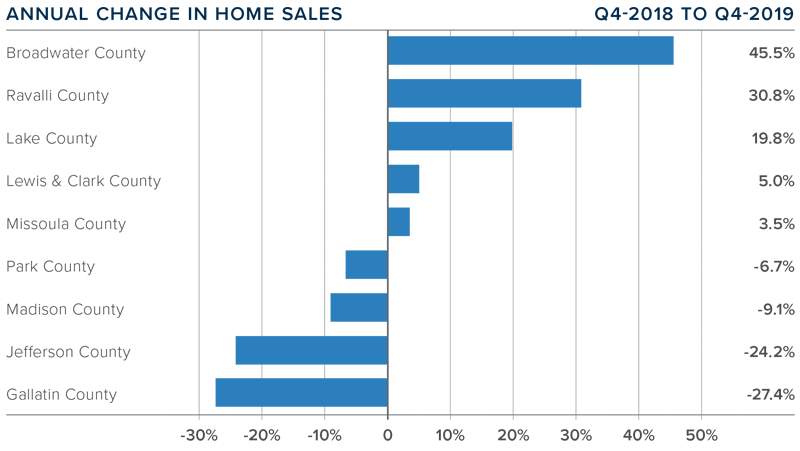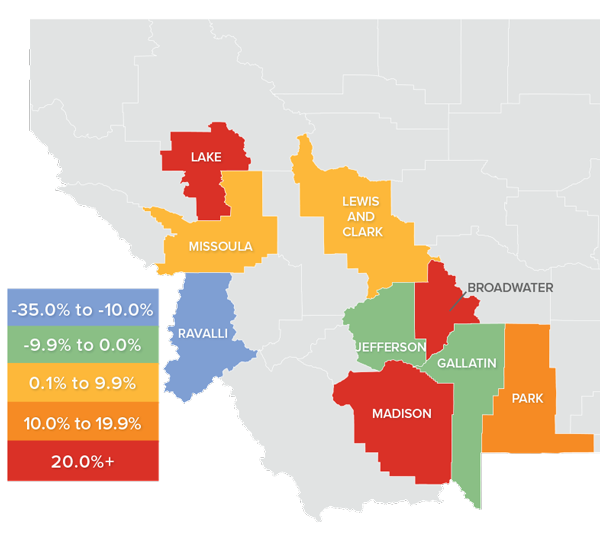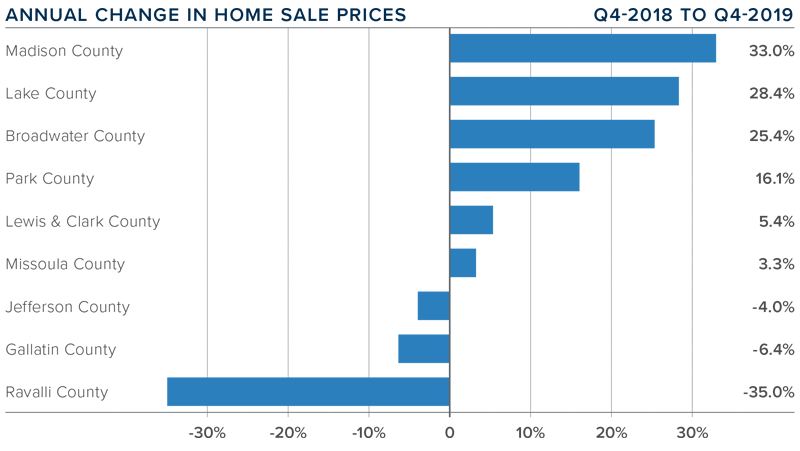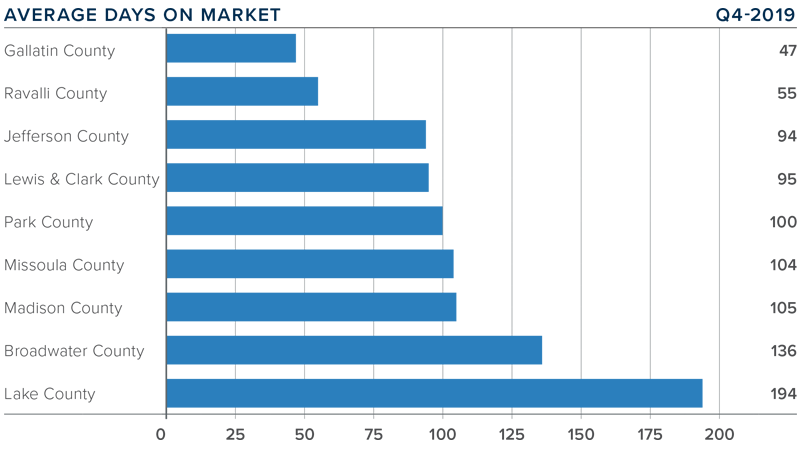The following analysis of select Montana real estate markets is provided by Windermere Real Estate Chief Economist Matthew Gardner. We hope that this information may assist you with making better-informed real estate decisions. For further information about the housing market in your area, please don’t hesitate to contact your Windermere agent.
ECONOMIC OVERVIEW
Montana added 5,700 new non-agricultural jobs over the past 12 months, representing an annual growth rate of 1.2%. Montana’s growth rate remains below the U.S. as a whole. My current forecast is for statewide job growth to rise 1.2% in 2020 with the addition of 5,800 new jobs. In November, the state unemployment rate was a healthy 3.4%, down from 3.7% a year ago.
HOME SALES
- During the final quarter of 2019, 760 homes sold, a drop of 4.7% compared to the same period a year ago.
- Similar to last quarter, total sales activity was a mixed bag: there were increases in five counties and declines in four. The largest annual increase was in Broadwater County, where sales were up more than 45%, though the increase was only five units. The largest decline in sales was in Gallatin County.
- The number of homes for sale remains well below levels I would like to see, with an average of 1,149 listings in the fourth quarter within the counties contained in this report.
- I believe low inventory levels are holding sales back. I am optimistic that we will see some growth in listing inventory in the spring of 2020, but the market is still far from balanced.

HOME PRICES
 Year-over-year home prices fell 4.6% compared to the same period a year ago to an average of $345,617.
Year-over-year home prices fell 4.6% compared to the same period a year ago to an average of $345,617.- Average home prices dropped the most in Ravalli County, but I believe this is somewhat of an anomaly and would not be surprised to see prices pick back up in 2020.
- Even though the region as a whole saw prices drop, six counties experienced price growth. Madison, Lake, and Broadwater counties all saw significant price increases.
- The takeaway from this data is that, in aggregate, home prices continue to contract but not all markets are created equal.

DAYS ON MARKET
- The average number of days it took to sell a home rose 12 days compared to the fourth quarter of 2018.
- Homes sold fastest in Gallatin County and slowest in Lake County. Ravalli and Missoula counties were the only markets where days on market dropped compared to the same period a year ago.
- During the final quarter of 2019, it took an average of 103 days to sell a home in the region. This is down 15 days compared to the third quarter of 2019.
- The takeaway here is that, although aggregate market time declined modestly, this was due to a significant drop in days on market in only two areas, not an overall market trend.

CONCLUSIONS
 This speedometer reflects the state of the region’s real estate market using housing inventory, price gains, home sales, interest rates, and larger economic factors.
This speedometer reflects the state of the region’s real estate market using housing inventory, price gains, home sales, interest rates, and larger economic factors.
For the final quarter of 2019, I have moved the needle just a little bit more in favor of buyers, though it continues to be a seller’s market. Mortgage rates remain at very attractive levels and home price growth has stalled. Additionally, the number of homes for sale, although still very low, should pick up and home sellers may start to rethink list prices if the market does not resume its buoyancy.
ABOUT MATTHEW GARDNER
 As Chief Economist for Windermere Real Estate, Matthew Gardner is responsible for analyzing and interpreting economic data and its impact on the real estate market on both a local and national level. Matthew has over 30 years of professional experience both in the U.S. and U.K.
As Chief Economist for Windermere Real Estate, Matthew Gardner is responsible for analyzing and interpreting economic data and its impact on the real estate market on both a local and national level. Matthew has over 30 years of professional experience both in the U.S. and U.K.
In addition to his day-to-day responsibilities, Matthew sits on the Washington State Governors Council of Economic Advisors; chairs the Board of Trustees at the Washington Center for Real Estate Research at the University of Washington; and is an Advisory Board Member at the Runstad Center for Real Estate Studies at the University of Washington where he also lectures in real estate economics.
 Facebook
Facebook
 Twitter
Twitter
 Pinterest
Pinterest
 Copy Link
Copy Link



